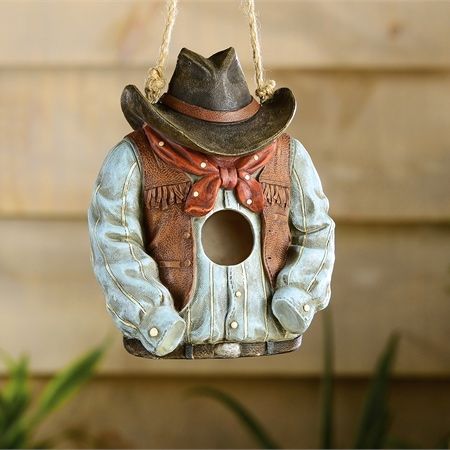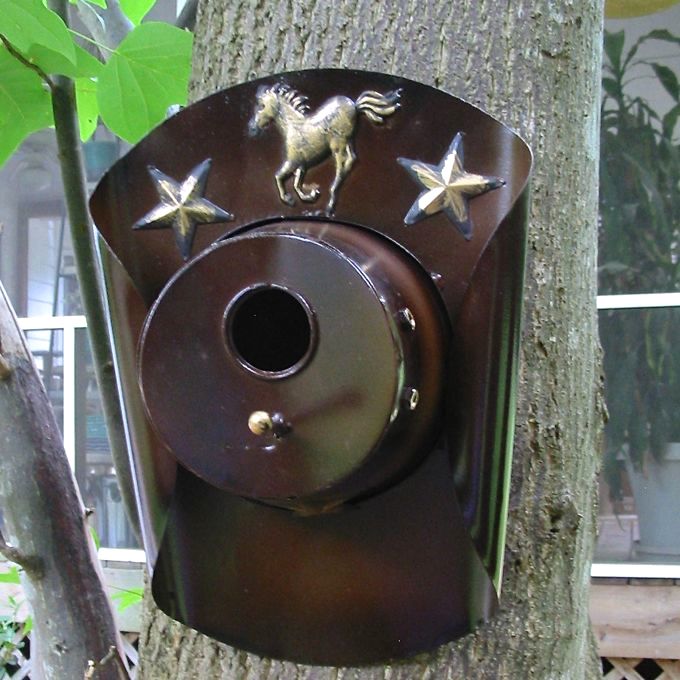-
Unique Birdhouses for Cowpoke Wannabe’s
Let’s face it, housing isn’t for everyone, but birds who do use houses will try to set up shop in just about any cavity they deem good for rearing chicks.
These include crevices in trees and older abandoned holes from woodpeckers and others who’ve already done the work of excavation.
These spots are becoming more and more scarce, simply invaluable to feathered friends! Competition for these natural nest sites increases tenfold with every passing year, it’s a housing crisis for the birds 🙁
Especially favored among residents like bluebirds, chickadees, titmice, nuthatches and Carolina wrens (to name a few) are proper bird houses! In early spring males will scout territory and nesting sites, from unique birdhouses to natural cavities, they look for suitable and impressive digs to entice a mate.
Some will have only one brood or clutch, or nesting for the season, whereas bluebirds may go onto a 2nd or even 3rd brood! This is why it’s important to remove nests and tidy up bird houses once babies have fledged. So that the spot may be utilized again and maybe even again after that in a single season.
The cowboy birdhouse would be pretty impressive for the Mrs.! It’s durable poly-stone (which helps regulate ambient temperatures) complete with bottom clean-out and 1.5-inch entry. Plus it’s cute as all with western flair and fine detail.
A little larger scale but still great space for a bird family is the cowboy hat birdhouse! This one’s metal so it’s best placed in the shade. Actually full sun on any birdhouse can be detrimental in summer’s heat. Always best to minimize direct exposure to early morning if possible – avoid late afternoon sun at all costs… it’s just too hot for nestlings inside the house.
Keep your bird houses up through winter as they provide ideal roosting spots on cold nights and protection from predators. Although migration is underway for many species, resident birds will stick around through winter if the habitat is suitable.
Offering fresh water (heated birdbath), a variety of food (seed and suet) and places to roost (housing and mature trees and shrubs) will ensure feathered friends grace your place through winter doldrums 🙂


